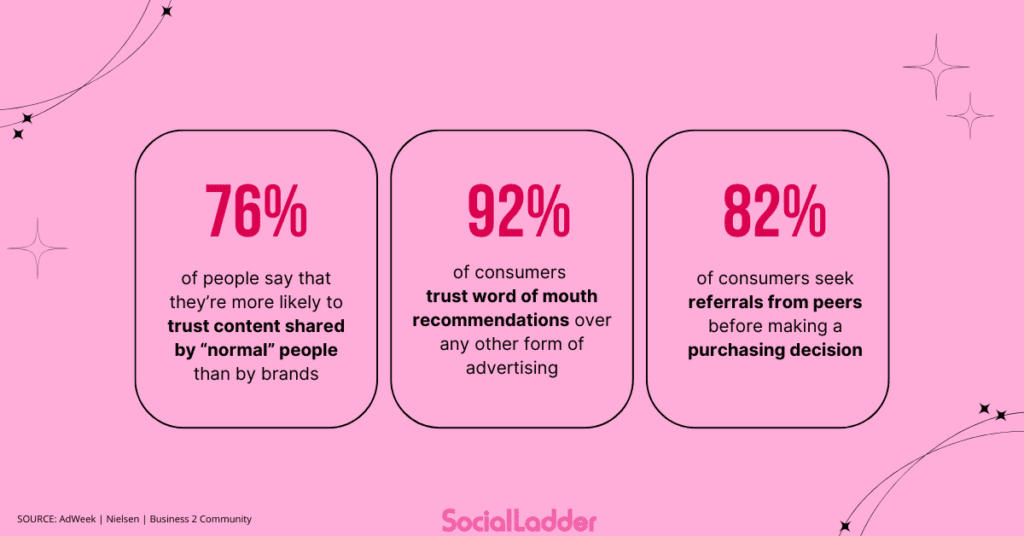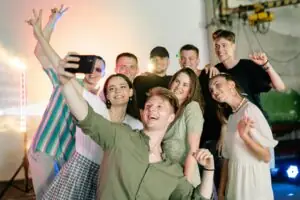This past week, we saw the latest amazing generative AI technology from the labs of OpenAI: Sora. In case you haven’t seen it — Sora generates up to 60 seconds of amazing cinema quality footage of anything you can possibly imagine, from just a few words; a single sentence “prompt”.
+ Read More: Building Advocacy: How to Cultivate a Thriving Ambassador Program
The quality of the footage, the camera angles, lighting, and the fantastical content is honestly hard to get your mind around — words don’t do it justice. You have to see it to believe it.
While technology like this has far reaching implications for the future of humanity — I couldn’t help but contemplate how this would impact the future of influencer marketing, user generated content (UGC) and social media.
Sora & Influencer Marketing
I love travel content — as an avid traveler, when I see short clips of an amazing beach in Sardinia with crystal clear turquoise water, cliffs rising above and white sand — it’s easy to be awestruck and impressed.
The reason that I’m awestruck and impressed is interesting — my baseline of beautiful beaches (for example) is rooted in experiences that I’ve had and other content that I’ve seen. When I look at that content, I think — wow — that’s impressive, that’s so much nicer than what I’ve seen before.
I’ll need to find a way to get there.
What happens when amazing photorealistic content can be generated of anything we can possibly imagine?
Better than anything that actually exists in the real world?
Will our interest wane when the content isn’t “real”? Will beautiful imagery be more attractive than authentic content?
First we had filters that made the colors pop in instagram. Then we had influencers that were photoshopping their content — shedding a few pounds or “adjusting” the lighting to make them look more favorable — then we had “Facetune” making us all just a little bit more attractive.
When Sora can create entire scenes of photorealistic content can be generated of anything we can possibly imagine — soon, we won’t be impressed with that amazing beach in Sardinia.
In fact we won’t be impressed with anything that we see, unless we somehow know that it’s real.
Authenticity in Influencer Marketing
Authenticity has been one of the most important shifts in influencer marketing — through the pandemic we all realized that we actually don’t care about “marketing shill” and just want to see what our real friends are doing. The quick growth (while short lived) of “BeReal” proved that authenticity and “realness” was attractive and interesting.
It’s through this shift that we started to value “real” content from “real” people — more than ever. In fact — this is most likely the main reason that content from micro and nano influencers seems to get substantially more engagement than content from professional influencers.
Professionally produced ads are always going to be more beautiful than content created by our friends — but still — the data seems to show that we engage more with “real” content.

More importantly — this “real” content seems to be almost 10x more influential when driving a purchasing decision.
In the battle of beauty vs. authenticity — it seems like authenticity is winning.
Because… at some point — it’s only impressive if it’s real right?
In this new world where anything we can imagine can be generated with just a few words — authenticity may soon need authentication.
As the authenticity of content becomes less trustworthy — humanity (and consumers) will continue to gravitate to the “real.” No doubt, technology will emerge that helps prove that the content that we’re impressed by is real. Authenticity will soon become something that can be authenticated.
Just as we reduced our engagement with banner ads, and eventually with the similarly “slick” content produced by professional influencers, we will continue to gravitate towards “real” content produced by “real” people.
AI generated content is like a fever dream — it’s fantastical and beautiful but if I want to know what the most effective skin cream is — it’s beauty is unlikely to be more engaging and influential than real content produced by a real person.
Fantastical ads are beautiful but when it comes down to it — we’re more impressed and influenced by what’s real.
While the future of creativity has never been more uncertain — one thing is more clear than ever: real people want to hear real stories about real things from other real people that they care about.



